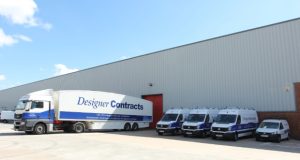Retrofitting everyday commercial properties – often overlooked in favour of high-profile, flagship projects – can generate extraordinary returns, according to a new report from Building Atlas.
Entitled ‘The Beauty in ‘Boring’ Buildings: the business case for retrofit beyond flagship assets’ the company’s proprietary analysis uncovered retrofit opportunities in so-called “boring” buildings delivering Internal Rates of Return (IRR) as high as 92 per cent, far surpassing returns typically seen in iconic projects.
While flagship retrofits such as London’s 7 Air Street and Leeds’ Greenhouse have been celebrated for their ambition and innovation, the report argues that they are important, but unique examples that are difficult to replicate across the UK’s commercial building stock. According to Building Atlas, the true climate and financial opportunity lies across the 77.8 per cent of UK commercial buildings currently facing stranded asset risk—suburban offices, mid-century retail, and regional warehouses.
Nick Taylor, CEO of Building Atlas said: “The real estate sector is chasing perfection in a handful of showcase buildings while ignoring the vast opportunity in the long tail. Our analysis shows that a carefully prioritised retrofit programme across ‘boring’ buildings can achieve carbon savings equivalent to flagship projects—at a fraction of the cost and with IRRs as high as 92 per cent.”
Key findings from the report include:
- A Building Atlas analysis of a subset of GP practices across Greater London identified retrofit projects delivering 351 tonnes of CO₂ savings per year—the equivalent of taking 250 cars off the road— with a payback period of just 1–2 years and an IRR between 46 per cent and 92 per cent.
- Flagship projects often exhibit diminishing marginal returns—with the final 10 per cent of carbon reductions consuming up to 40 per cent of budgets.
- While high-cost, low-impact retrofits can capture the public imagination, Building Atlas finds that the “boring” lower-cost, high-impact retrofits are what’s needed to get the built environment on track to decarbonise.
- 90 per cent of carbon savings can typically be achieved at just 60–70 per cent of the cost of pursuing BREEAM “Outstanding” ratings, according to UK Green Building Council research cited in the report.
Building Atlas argues for a tiered retrofit strategy, prioritising fast, scalable interventions such as LED lighting, smart thermostats, and intelligent energy controls—particularly across the UK’s 29 million ageing non-domestic and domestic buildings.
Taylor added: “It’s time to shift from chasing awards to chasing impact. The most effective climate investment in real estate isn’t in iconic West End offices—it’s in thousands of suburban offices and warehouses.”
The report serves as a call to action for real estate investors, owners, and policymakers to redirect capital and retrofit business cases toward high-volume, scalable retrofit measures: maximising carbon reduction per pound spent while protecting portfolios from future regulatory and financial risk.





